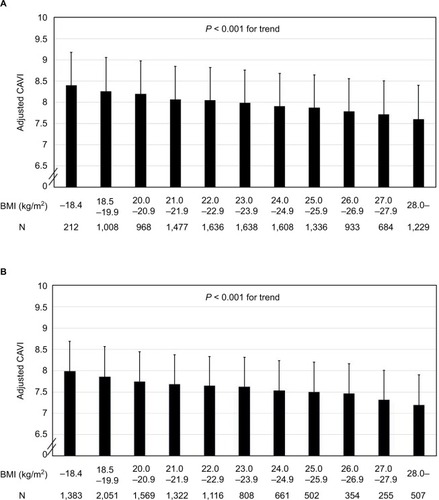Figures & data
Table 1 Characteristics of male and female participants
Table 2 Prevalence of major cardiovascular risk factors
Figure 1 Relationship between adjusted cardioankle vascular index and BMI in (A) male and (B) female subjects.
Abbreviations: BMI, body mass index; CAVI, cardioankle vascular index; sBP, systolic blood pressure; HDL-C, high-density lipoprotein-cholesterol.

Table 3 Correlation of cardioankle vascular index with clinical variables analyzed by multiple regression model
Table 4 Characteristics of male and female participants stratified by tertile of body mass index
Table 5 OR (95% CI) for high cardioankle vascular index (≥90th percentile)
